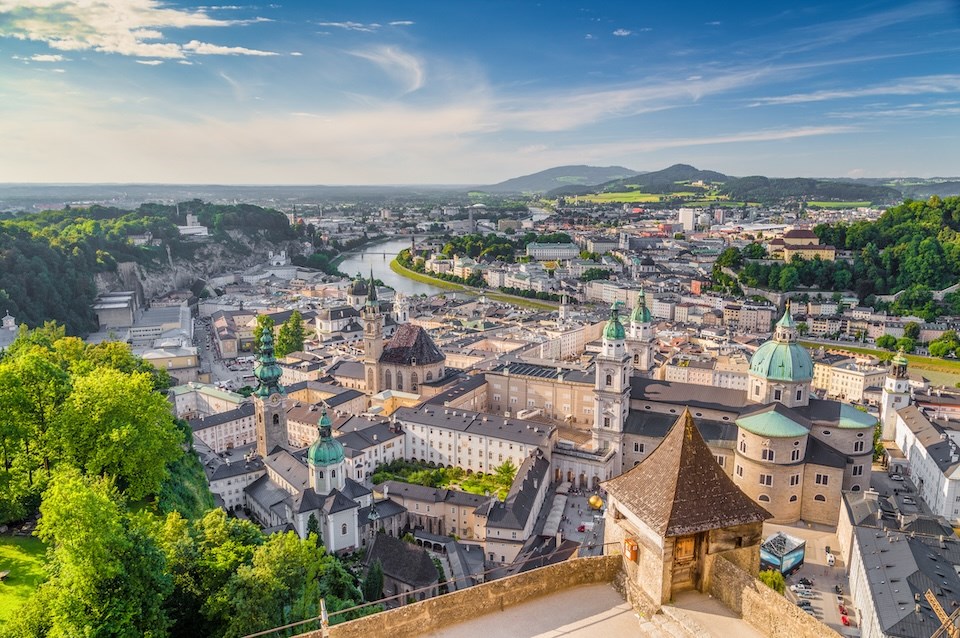Vienna is known as the City of Music, where several famous composers rose to fame, and I had to pay my respects.
I recently spent five nights in the Austrian capital and one in Salzburg, the birthplace of Wolfgang Amadeus Mozart.
I wanted to see everything from where Mozart was born, lived, and where he was laid to rest, but my expedition proved more difficult (or impossible) than I expected. That said, I found some other unexpected treasures along the way, and my appreciation for classical music and Austria's rich history grew.
Salzburg an ideal trip from Vienna
A trip to Austria is not complete without a stop in Salzburg. The city lies east of Vienna on the German border, with a population of just over 150,000. Vienna, in contrast, is a sprawling metropolis with over two-and-a-half million residents.
Luckily for visitors, Salzburg makes an ideal day trip from Vienna, meaning you don't have to book an overnight or two to get a taste of the city. I opted to spend a night, and I'm glad I did, since there is so much to do and it's nice to have more time.
How do you get to Salzburg?
I travelled from Vienna to Salzburg by train, which was a breeze. It didn't hurt that my accommodation, the posh Hotel Motto, was located a stone's throw from the closest U-Bahn station, Neubaugasse, along the Mariahilfer Straße. The area has statuesque buildings ranging from the 17th century to the present day, with a massive, car-free street separating them. Beautiful trees with emerald-green canopies arch over portions with sizable outdoor seating areas perfect for sipping melange coffees, wine, or beer on a hot summer day.
Alternatively, the city's taxis arrive with alacrity, offering oftentimes rushed or heavily-packed travellers expedited and convenient transportation to train stations and the airport. The Westbahn is described as "Europe's most advanced and comfortable train fleet," and moves quickly between the Austrian capital and several other city centres. It only took about three hours to reach Salzburg, and I easily stowed my luggage and enjoyed a coffee on board.
The journey to Salzburg feels dreamlike, as Vienna's awe-inspiring palaces and colossal streets fade into miles of pastoral countryside vistas.
Where are you, Amadeus? I can hear The Sound of Music
After getting acclimated to the striking juxtaposition between the capital and Salzburg (a stop for a beer and a hearty meat dish in a local tavern did the trick), Salzburg expert and private guide Michaela Muhr took me on a journey on foot to Mozart's birthplace.
Salzburg's walkability is striking. You can visit numerous (unrelated) places of historical significance within a few hours. For example, we started the tour at my accommodation, the Hotel Am Mirabellplatz, located directly by the Mirabell Palace and its stunning garden. We walked from the hotel to the palace area and discussed some of the history, including the changing of royal hands, which includes immense wealth and prestige, scandal, art, and love.
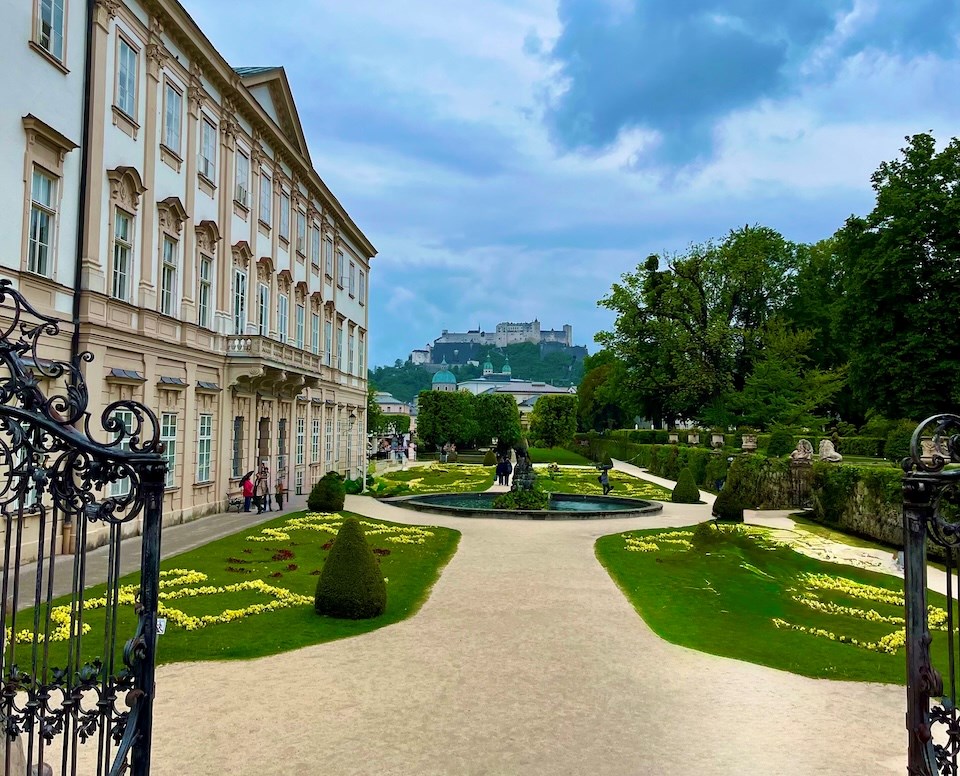
But on the way to find Mozart, you'll almost unavoidably waltz through The Sound of Music. The iconic movie was filmed in Salzburg, and key locations are sprinkled across the city, including these breathtaking gardens.
The striking Mirabell Palace has stately vistas from the steps overlooking the manicured grand gardens outside the palace.
Naturally, the beautiful park's Pegasus fountain and the nearby steps made ideal locations for filming the "Do-Re-Mi" scenes in The Sound of Music. Maria (played by Julie Andrews) and the children dance on the fountain and the steps while singing the song, as well as in numerous places across the city. The number commences by Maria explaining the Do-Re-Mi sequence to the group on a rolling green hill, but then she escorts them on a musical rendezvous through that city.
This is also a big year for Sound of Music fans. The film is celebrating 60 years since it captivated a global audience with its 1965 release. On each of its major anniversaries, Salzburg honours the beloved musical with special tours and additional notoriety in its tourism packages (although it draws tourists every year who are fans of the film).
Muhr has a special tour specifically catered to Sound of Music fans, meaning you can explore every scene in the film, snap cinematic photos, and maybe sing a little as you skip through the streets.
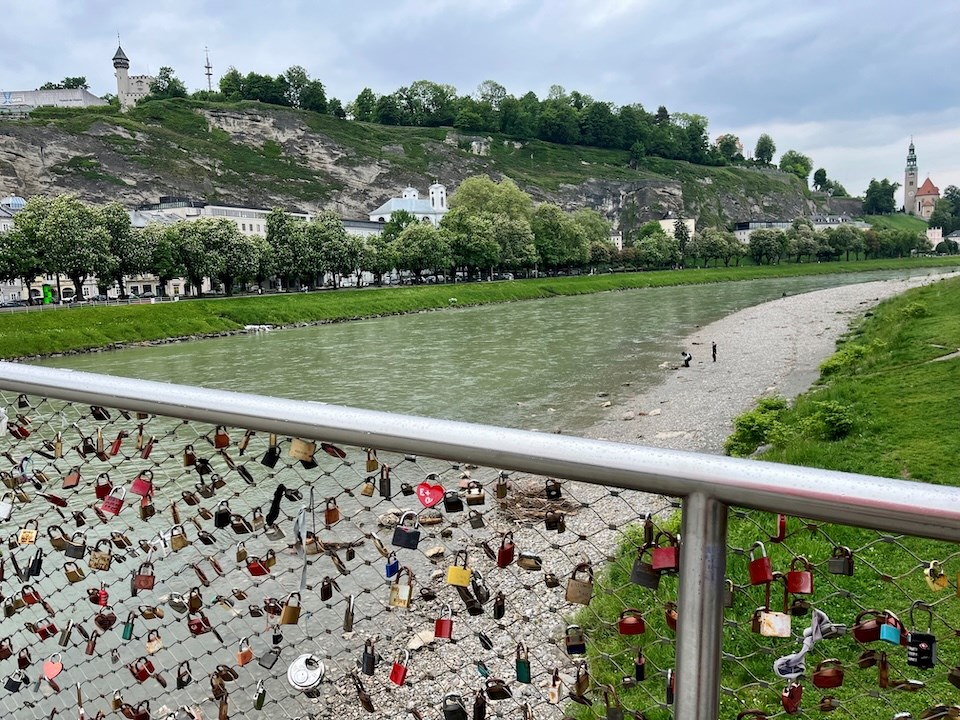
You can feel the blockbuster's heartwarming magic in Salzburg's streets. The procession from the palace across the bridge invited those gentle heart pangs I only get when I'm in a smaller city. Don't get me wrong: I love getting lost in sprawling metropolises such as Paris, Hong Kong, and New York; they offer a breed of adrenaline that pierces your core. But Salzburg's size provides an almost immediate intimacy. After a day and night in the city, it was hard to shake the feeling that I wasn't part of it.
Salzburg's historically significant city centre
In 1996, the UNESCO World Heritage Centre designated Salzburg's historic city centre a site of historical significance for its baroque architecture at a time of pivotal exchanges between the Italian and German cultures. Important city structures were designed by Italian architects Vincenzo Scamozzi and Santino Solari. Additionally, the city is surrounded by striking mountain ranges, dominated by the fortress of HohenSalzburg.
Salzburg also received the nod from UNESCO for its association with numerous important artists and musicians, notably Mozart.
The musical geniuses' birthplace is in a multi-family apartment building called Hagenauer Haus in No. 9 Getreidegasse. Back then, his family didn't own the building. As a family of lower wealth, they were located on a higher floor (that's how it worked in those days). The higher up the building you were, the lower the ceiling was. In other words, you may need to duck a bit going through Mozart's doorways. Now, the bright-yellow building is rightfully adorned with his name: Mozarts Geburtshaus.
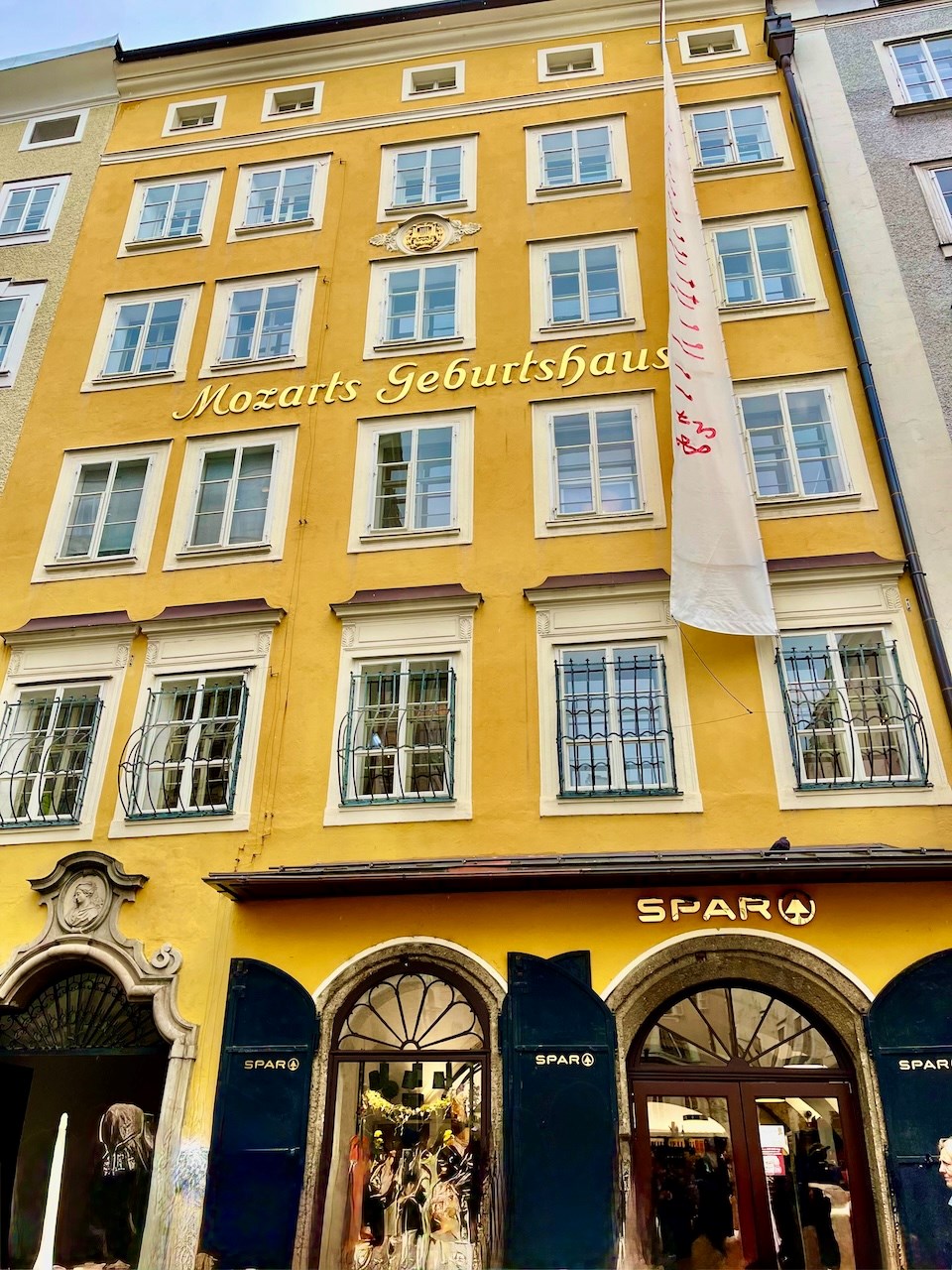
Unfortunately, the man who made so much beautiful music never received his flowers in his day, even after being touted as a musical prodigy and performing for the Habsburgs in Vienna at the tender age of six. He played for Empress Maria Theresa at Schönbrunn Palace in 1792 with his violinist sister, Maria Anna (she was 10).
Muhr guided me through the apartment, starting with a journey through the building owned by the Hagenauer family, who lived on the bottom floor (they were wealthy spice merchants). The lowest floor has a large living area with a piano, where they now hold some concerts. To get to Mozart's living quarters, we journeyed up some stairs and into a now-open space with several cases holding relics of the composer's family life, with everything from sheet music, jewellery, photographs, instruments, books, and paintings of various individuals.
Journey through Mozarts Geburtshaus
Mozart hailed from a musically gifted family. His father, Leopold Mozart, was a prominent musician and wrote a book entitled A Treatise on the Fundamental Principles of Violin Playing. They weren't extraordinarily wealthy, but always comfortable. That said, you may notice a few times where the family saved money on looking posh.
In some of the family portraits, only one hand is displayed, despite the painting showing the individual's full torso and top of the legs. During this period, Muhr told me that a commissioned painter charged a premium to draw hands, so having one of them behind the subject's back or under an object saved significant money.
A painting of a six-year-old Mozart shows the prodigy wearing a fancy lavender outfit with a gold trim and a lacy white shirt beneath it. He has one hand inside his buttoned-up coat as he stares expressionlessly at the observer.
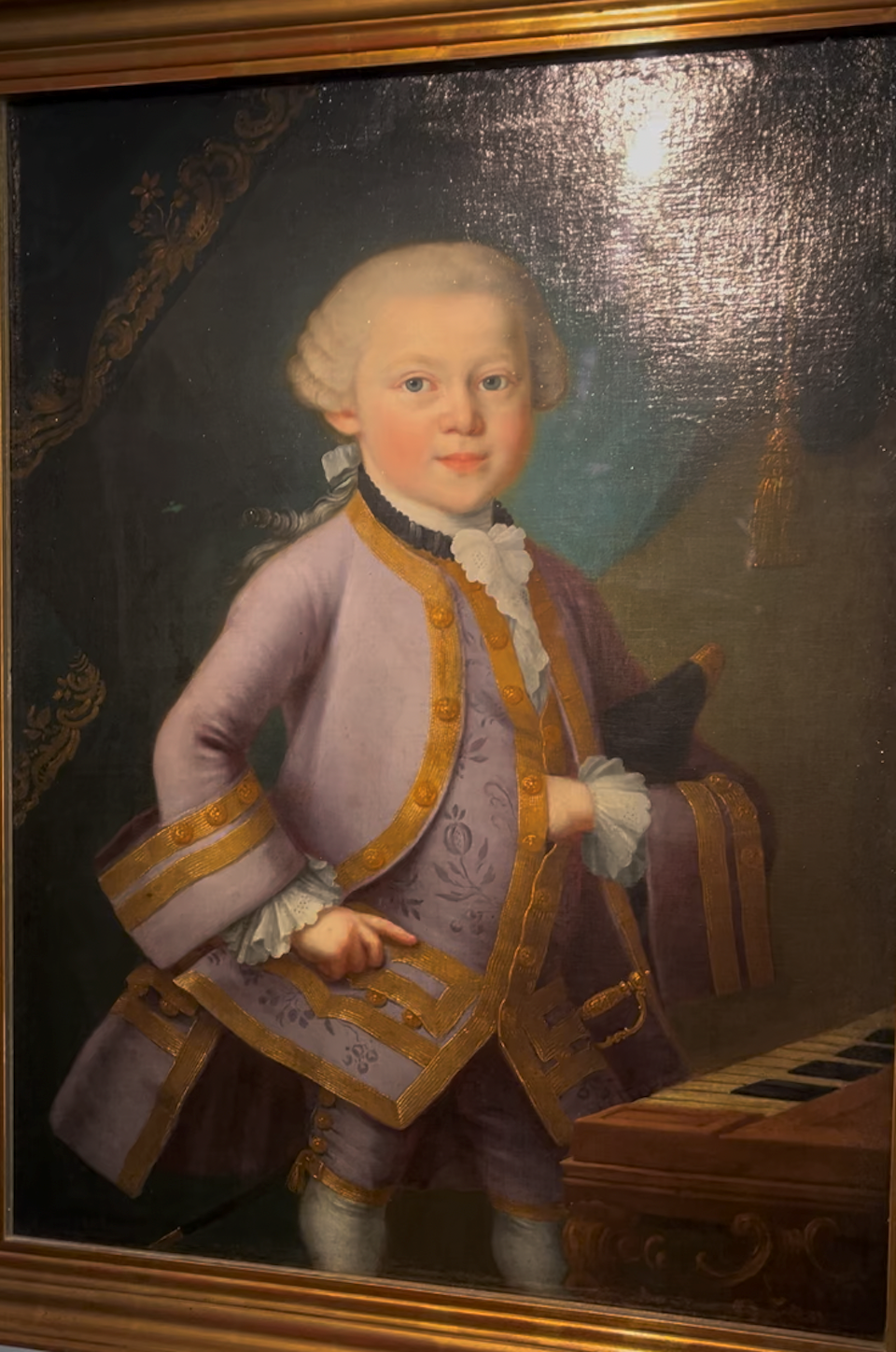
Muhr noted that people wore wigs during this time to show status and wealth, with many indicating a higher status (they also concealed hair loss and head lice). The wig's white powder combated odours.
The journey through Mozart's apartment includes information about his entire family, including his wife, who survived him and married one of his greatest admirers. His widow, Constance, and new husband, Georg Nikolaus von Nissen, co-authored a book about the composer.
Mozart had two children with Constance, although only one followed in his musical footsteps (Franz Xaver Wolfgang Mozart).
The composer also covered a significant amount of ground in his life. He ventured on an impressive 17 voyages and was on the road 3,720 days, totalling 10 years, two months, and two days, or about a third of his life.
But after a glowing royal reception, Mozart's popularity sharply declined as he reached adulthood.
Rewind to Vienna: The City of Music
Mozart went to Vienna when he turned 25 to further his musical career. After enjoying anomalous fame during his youth, the composer's options were limited in his birth city.
And the composer had to move around...a lot.
Mozart lived in an impressive 13 apartments in the capital, although only one remains for public inspection at Domgasse number 5 (he lived here from 1784 to 1787). This number feels extraordinary considering he passed away at 35. Although people didn't live as long in the late 1700s, his life was considered short.
Mozarthaus Vienna is open for visits, paying homage to the city's most popular star. Sure, Joseph Haydn, Ludwig van Beethoven, and Franz Schubert are massively famous with extensive oeuvres, but one cannot escape Mozart in the capital (although I didn't try).
Mozart chocolates of several varieties crop up in dedicated shops across touristy areas, or they are sold in gift shops outside popular attractions. I gave the cliché snack a whirl (not the real deal from Salzburg) while near Schonbrunn Palace. It's a light, marzipan and nougat sweet coated in a thin layer of chocolate, and you get to have a glance at the composer's emotionless face before you tear the wrapper away. Perhaps tourists appear corny sampling the treat, but I enjoyed it.
The "official" Mozart chocolates were created in 1890 by Salzburg confectioner Paul Fürst. Today, Konditorei Fürst is Austria's only confectionery using the traditional recipe. While I enjoyed both, the Salzburg chocolates have a more complex flavour (including pistachio), and the chocolate is of better quality.

Mozart also walks around the city (not his ghost but people dressed up as him). Costumed "Mozarts" encourage people to buy tickets to various attractions, donning their powdered wigs and elegant, 17th-century attire. It is a pretty interesting phenomenon. However, in Vienna, Mozart's unique look and unquestionable musical legacy catapulted him into a stardom unthinkable in his lifetime.
Vienna celebrates 'Waltz King' Strauss in 2025
With all of Mozart's potent influence, Vienna is focusing on a separate musical genius this year. Johann Strauss II composed over 500 pieces and was widely known as "The Waltz King." While he didn't invent the waltz, he popularized it across Europe. In 2025, the city is paying homage to the composer on his 200th birthday with special events on stages, in ballrooms, and in public spaces.
Rebel Tours founder and guide Sebastian Knöbl told me "The Blue Danube" composer was considered the first pop star, famed for his good looks, charming personality, and captivating operettas.
However, he can't even conceptualize how many times he's said the name "Mozart" on tours.
"Everyone knows Mozart when they come to Austria. He is one of the country's symbols. He was a genius," he told me.
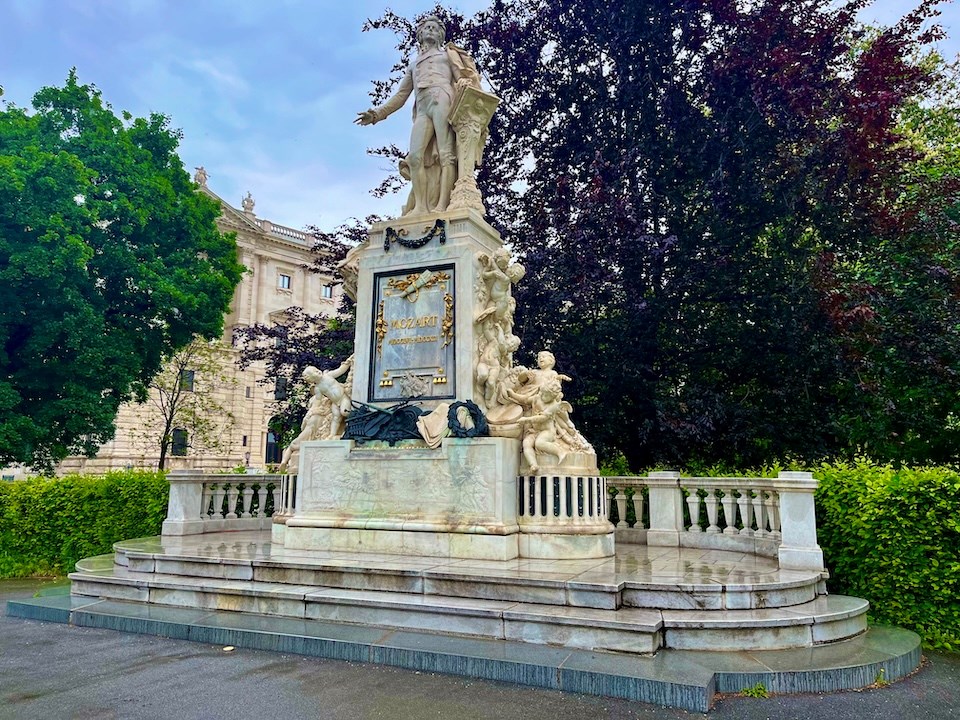
Knöbl notes that sometimes Mozart and Beethoven would play in coffeehouses where people wouldn't really pay attention.
"Today it would be unthinkable. People would pay hundreds of Euros to see him play," he remarked.
Austrian composer Gustav Mahler changed how people watched music by implementing audience expectations.
"He said, 'This musical sloppiness...we won't have it anymore. If you miss the beginning, you will wait until the next break. There will be no eating. No drinking," Knöbl said.
Locals hated the Vienna State Opera house when it was built
The Vienna State Opera sits in the First District in Vienna's city centre. It was constructed in 1869, and visitors can enjoy different music daily.
Tickets go up to €200, but the stands cost €10 to €15, making it a really "democratic place" for everyone to enjoy. Knöbl recommends people buy directly from the opera online, because the people standing outside aren't always legitimate. But it is possible to buy some last-minute ones at the opera directly (depending on the availability that day).
The opera is three hours long, but there is always an intermission (consider comfy shoes if you plan on braving the standing area).
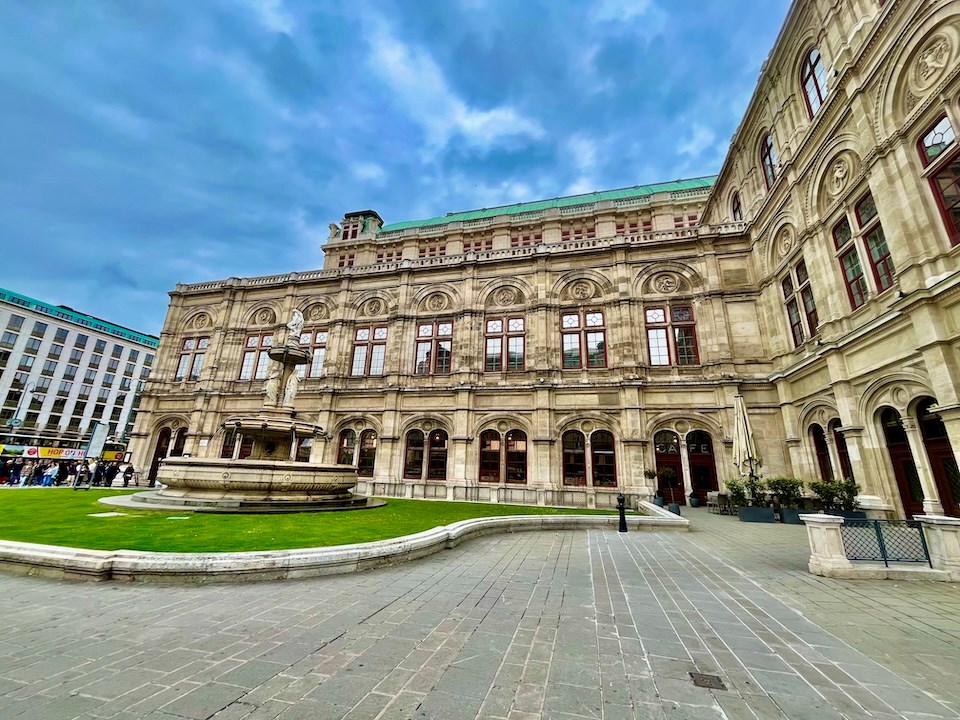
The now-popular opera house wasn't exactly a hit when it was built. When Knöbl asked me how I felt about it, I had to admit it wasn't as impressive as many of Vienna's awe-inspiring buildings.
And I am not alone in my feelings about the historic building.
"Back when it was built, the Viennese hated it," he commented.
Tragically, one of the two architects who designed the structure could not take the pubic criticism and committed suicide. The other architect died shortly after from a heart attack caused by the stress.
Following the tragic deaths of the architects, Emperor Franz Joseph I started speaking very diplomatically; he didn't want to speak negatively of projects that could sway public opinion negatively.
From then on, if he wasn't particularly fond of something, he would only say a few positive words and then leave, Knöbl said.
During the Second World War, the opera was heavily damaged by the bombings. The restoration brought it back to near-perfect condition.
Paying my respects to the musical legends
Before leaving the City of Music, I travelled to the Vienna Central Cemetery to pay my respects to Beethoven, Mozart, and Strauss. I bought roses to lay on their graves; a flower shop is at the entrance to the graveyard.
Of course, there are countless other people to visit in the cemetery. It is Europe's second-largest cemetery and home to top political figures, prominent figures, movie stars, and other musical greats.
Since it is a massive green space, you can also watch for deer, foxes, numerous birds, squirrels, and other wildlife (nothing dangerous). While getting lost in the cemetery is great if you have time to spare, you may want to purchase a map at the entrance to locate the musician's area.
Unfortunately, Mozart's "grave" doesn't contain the exact location of the composer's body. He was buried in a common, unmarked grave somewhere, so the cemetery has honoured him in the centre of the musical area with a monument. Still, I laid pink roses for the man who never fully received them in his time.
Beethoven rests in his grave, and you may hear "Symphony No. 5" dancing in your mind when you visit.
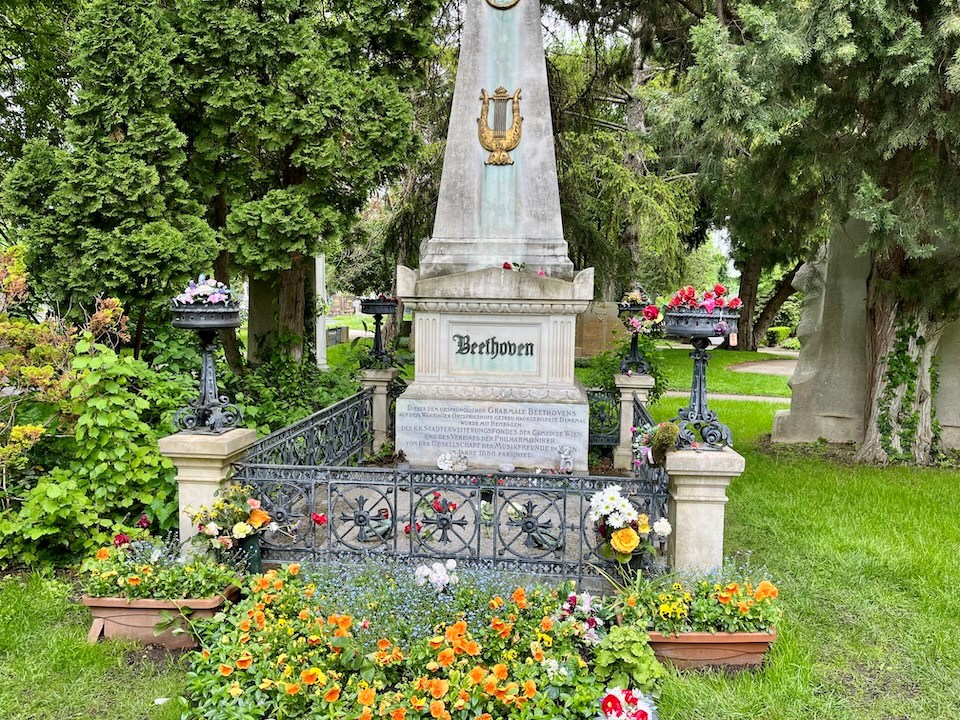
Thanks to Development Counsellors International and the Vienna Tourist Board for facilitating a portion of the meals and activities mentioned above. All opinions and inclusions are those of the author and were based solely on personal experience. None of the businesses or entities featured were granted any previews of the story before publication or paid to be mentioned.
Find more information about exciting destinations in B.C. and across the globe, as well as travel deals and tips, by signing up for V.I.A.'s weekly travel newsletter The Wanderer. Since travel deals can sell out, find out the day they are posted by signing up for our daily Travel Deals newsletter.
Want to learn more about a specific destination or have a travel concern or idea you would like V.I.A. to write about? Email us at [email protected]. Send us stories about recent holidays that you've been on, or if you have any tips you think our readers should know about.
